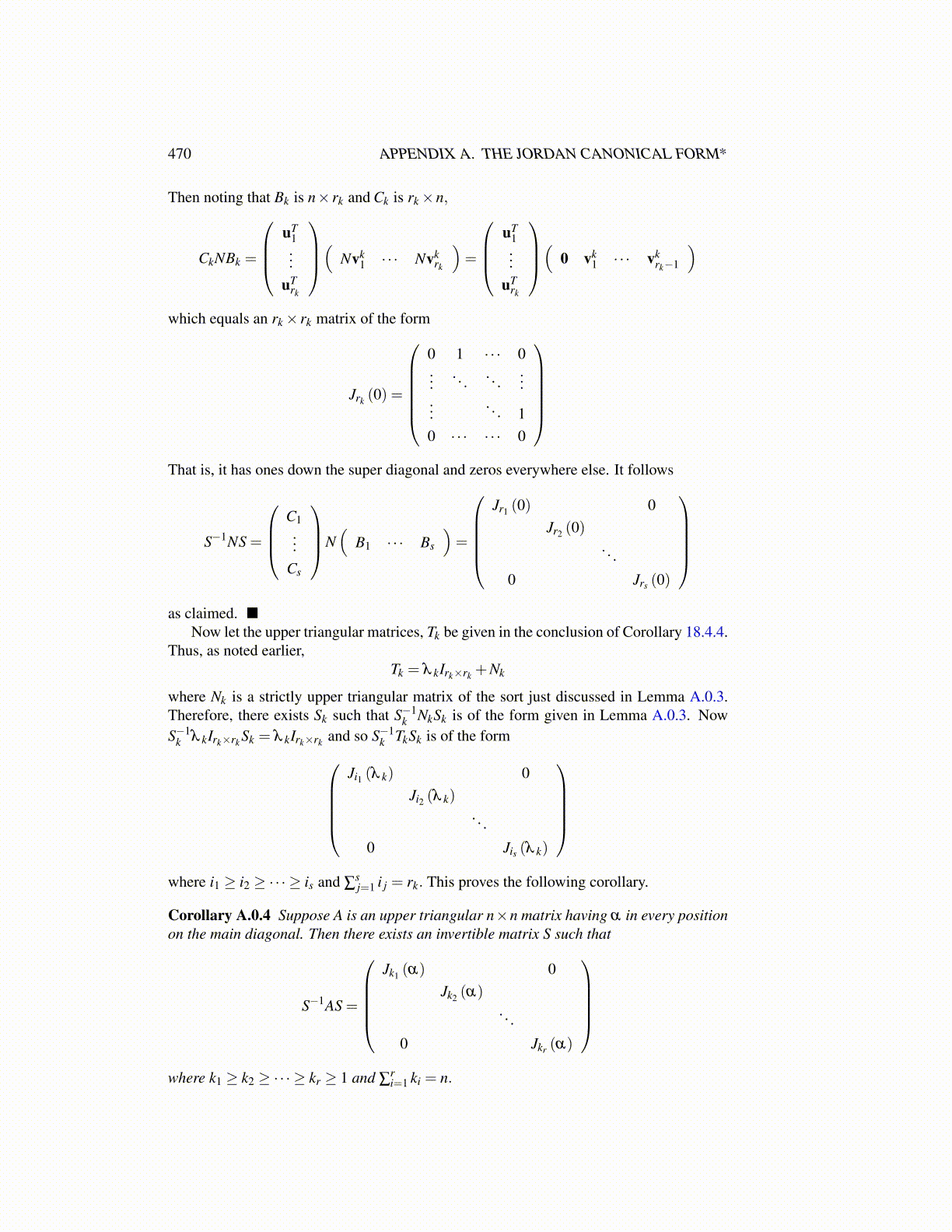
470 APPENDIX A. THE JORDAN CANONICAL FORM*
Then noting that Bk is n× rk and Ck is rk×n,
CkNBk =
uT
1...
uTrk
( Nvk1 · · · Nvk
rk
)=
uT
1...
uTrk
( 0 vk1 · · · vk
rk−1
)
which equals an rk× rk matrix of the form
Jrk (0) =
0 1 · · · 0...
. . . . . ....
.... . . 1
0 · · · · · · 0
That is, it has ones down the super diagonal and zeros everywhere else. It follows
S−1NS =
C1...
Cs
N(
B1 · · · Bs
)=
Jr1 (0) 0
Jr2 (0). . .
0 Jrs (0)
as claimed. ■
Now let the upper triangular matrices, Tk be given in the conclusion of Corollary 18.4.4.Thus, as noted earlier,
Tk = λ kIrk×rk +Nk
where Nk is a strictly upper triangular matrix of the sort just discussed in Lemma A.0.3.Therefore, there exists Sk such that S−1
k NkSk is of the form given in Lemma A.0.3. NowS−1
k λ kIrk×rk Sk = λ kIrk×rk and so S−1k TkSk is of the form
Ji1 (λ k) 0Ji2 (λ k)
. . .
0 Jis (λ k)
where i1 ≥ i2 ≥ ·· · ≥ is and ∑
sj=1 i j = rk. This proves the following corollary.
Corollary A.0.4 Suppose A is an upper triangular n×n matrix having α in every positionon the main diagonal. Then there exists an invertible matrix S such that
S−1AS =
Jk1 (α) 0
Jk2 (α). . .
0 Jkr (α)
where k1 ≥ k2 ≥ ·· · ≥ kr ≥ 1 and ∑
ri=1 ki = n.